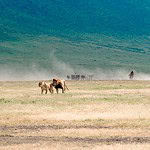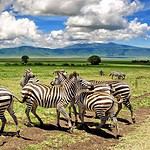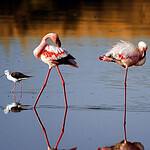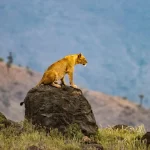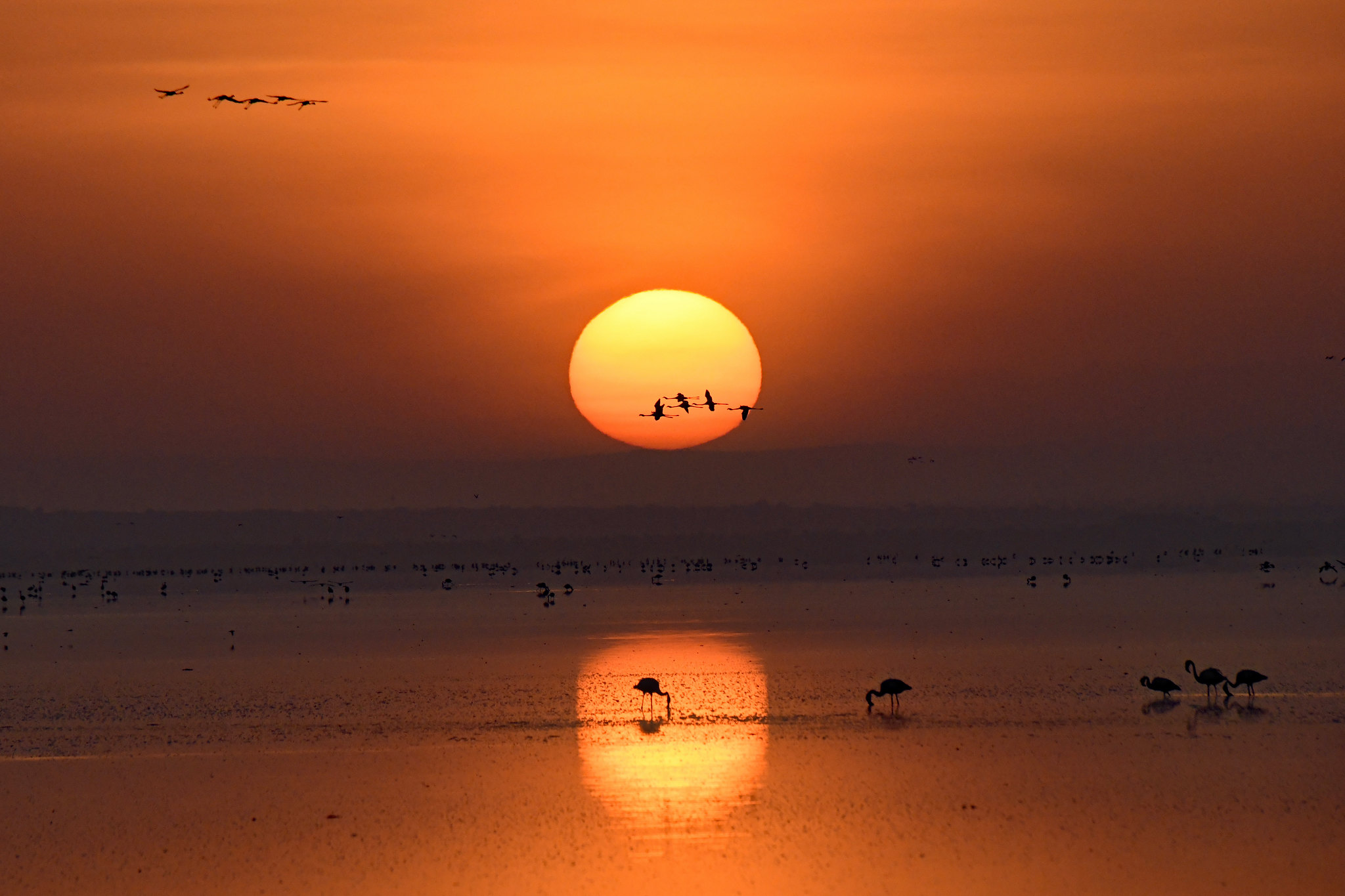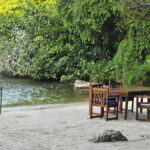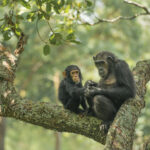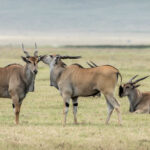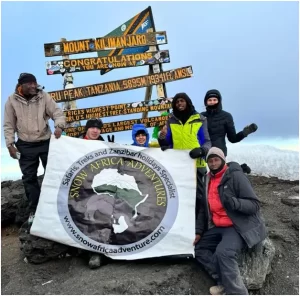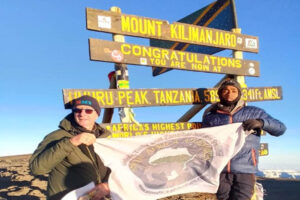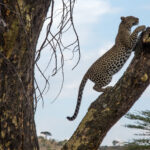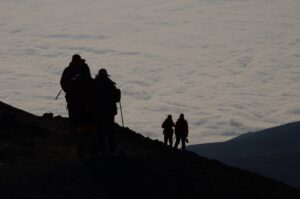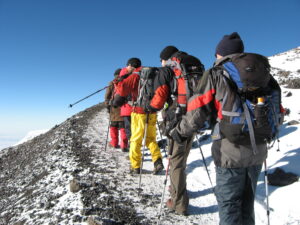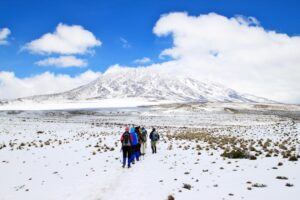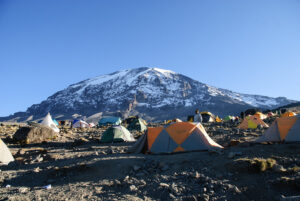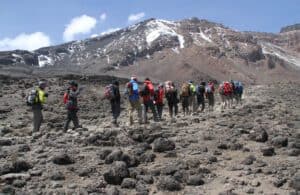
Blog The First Person to Climb Kilimanjaro: A Historic Journey to the Roof of Africa
The First Person to Climb Kilimanjaro: A Historic Journey to the Roof of Africa
Scaling New Heights: The Incredible Journey of the First Person to Conquer Kilimanjaro
In the spectacular realm of conquering mountains and pushing the limits of human endurance, one extraordinary individual stands tall. Scaling New Heights is a captivating account of the incredible journey undertaken by the first person to climb Kilimanjaro, the highest peak in Africa. With sheer determination and unyielding courage, this brave navigator embarked on a quest that would forever etch their name in the annals of mountaineering history as the first person to climb Kilimanjaro.
This gripping narrative takes us on an expedition of a lifetime, as we explore the arduous challenges faced by our intrepid protagonist, the first person to climb Kilimanjaro. From the unpredictable terrain to the harsh weather conditions, every step is a battle against the elements and one’s own inner fears. But through unwavering perseverance, they ascend to the summit, touching the skies and leaving an indelible mark on their personal adventure story as the first person to climb Kilimanjaro.
Join us on this awe-inspiring odyssey as we delve into the triumphs and tribulations of an individual who dared to venture where no one had gone before. Get ready to be inspired, motivated, and filled with a sense of awe as we unravel the remarkable tale of the first person to climb Kilimanjaro.
Brand Voice: Adventurous, inspiring, and empowering
The challenges of climbing Mount Kilimanjaro
Towering over the African landscape at an awe-inspiring height of 19,341 feet (5,895 meters), Mount Kilimanjaro is a formidable challenge that has captivated the hearts and minds of adventurers from around the world. As the highest free-standing mountain in the world, Kilimanjaro presents a unique set of obstacles that test the limits of human endurance and determination, as experienced by the first person to climb Kilimanjaro.
Navigating the treacherous terrain, which ranges from lush rainforests to barren alpine deserts, requires a level of physical and mental fortitude that few possess. The first person to climb Kilimanjaro faced these very challenges on their historic ascent. The journey takes climbers, including the first person to climb Kilimanjaro, through diverse ecosystems, each with its own set of challenges. From the dense vegetation of the lower slopes to the icy glaciers near the summit, the path to the top is fraught with hazards that can test even the most seasoned mountaineers, including the first person to climb Kilimanjaro.
Altitude sickness, one of the most significant dangers faced by Kilimanjaro climbers, can strike at any point during the ascent. The first person to climb Kilimanjaro had to contend with this, as the body struggles to adapt to the decreasing oxygen levels. Symptoms such as headaches, nausea, and fatigue can quickly become debilitating, posing a serious threat to the climber’s safety and success. Navigating this challenge requires careful acclimatization, proper hydration, and the ability to recognize and respond to the early signs of altitude sickness, as was crucial for the first person to climb Kilimanjaro.
Training and preparation for climbing Mount Kilimanjaro
Conquering the mighty Kilimanjaro is no easy feat, and it requires meticulous planning and preparation to ensure a successful and safe expedition. Aspiring climbers must embark on a rigorous training regimen that not only builds physical strength and endurance but also hones their mental fortitude and problem-solving skills.
One of the key components of Kilimanjaro preparation is cardiovascular fitness. Climbers must be able to sustain a steady pace for extended periods, often while carrying heavy packs, as they ascend the mountain’s steep slopes. This requires a comprehensive training program that incorporates activities such as hiking, running, and cycling to improve overall endurance and stamina.
In addition to cardiovascular fitness, climbers must also focus on building muscular strength, particularly in the legs and core. The demanding nature of the climb, which involves navigating uneven terrain and steep inclines, requires a high level of lower-body strength and stability. Strength training exercises, such as squats, lunges, and stair-climbing, can help prepare the body for the rigors of the Kilimanjaro ascent.
Mental preparation is equally crucial for conquering Kilimanjaro. The journey is as much a test of the mind as it is of the body, and climbers must be equipped with the resilience and determination to overcome the inevitable challenges they will face. Visualization techniques, goal-setting exercises, and meditation practices can all help climbers develop the mental fortitude necessary to push through the toughest moments on the mountain.
The incredible journey of the first person to conquer Kilimanjaro
In the annals of mountaineering history, the story of the first person to conquer Kilimanjaro stands out as a testament to the human spirit’s boundless potential. This intrepid explorer, driven by a relentless pursuit of the unknown and a deep-seated desire to push the boundaries of human achievement, embarked on a journey that would forever change the course of their life and inspire generations to come.
The road to the summit was paved with countless obstacles, each one more daunting than the last. From navigating the treacherous terrain to battling the unpredictable weather conditions, the first Kilimanjaro conqueror faced a seemingly endless array of challenges that would have broken the spirit of even the most seasoned mountaineers. Yet, through sheer determination and an unwavering commitment to their goal, they persevered, one step at a time, driven by an unshakable belief in their own abilities and the knowledge that they were making history with every stride.
As they ascended the slopes, the climber encountered a diverse array of landscapes, each one more breathtaking than the last. From the lush, verdant rainforests of the lower slopes to the barren, wind-swept alpine deserts near the summit, the journey was a symphony of contrasts, a testament to the ever-changing nature of the mountain’s terrain. With each passing mile, the climber’s sense of awe and wonder grew, fueling their determination to reach the top and claim their rightful place in the annals of mountaineering history.
Lessons learned from scaling Mount Kilimanjaro
The journey of the first person to conquer Kilimanjaro is not just a tale of physical endurance and triumph; it is a profound exploration of the human spirit and the transformative power of perseverance. As this intrepid explorer scaled the mountain’s slopes, they learned invaluable lessons that would forever shape their outlook on life and their approach to overcoming challenges.
One of the most crucial lessons imparted by the Kilimanjaro ascent was the importance of adaptability. The mountain’s unpredictable nature, with its constantly shifting weather patterns and ever-changing terrain, demanded that the climber be able to think on their feet and adjust their strategies accordingly. This ability to adapt and improvise in the face of adversity would become a cornerstone of the climber’s approach to problem-solving, a skill that would serve them well in all facets of their life.
Another pivotal lesson learned on the mountain was the power of teamwork and collaboration. While the final ascent to the summit was a deeply personal and solitary experience, the climber recognized the crucial role played by their support team – the guides, porters, and fellow adventurers who accompanied them on the journey. This understanding of the value of collective effort and mutual support would inspire the climber to foster stronger relationships and cultivate a spirit of camaraderie in their personal and professional endeavors.
Perhaps the most profound lesson, however, was the transformative power of the Kilimanjaro experience itself. As the climber stood atop the mountain, gazing out over the vast expanse of the African landscape, they were struck by a profound sense of humility and awe. This realization of their own insignificance in the grand scheme of the natural world would inspire a deep sense of gratitude and a renewed commitment to living a life of purpose and meaning, fueled by a deeper appreciation for the beauty and fragility of our planet.
Tips for aspiring climbers
For those who aspire to follow in the footsteps of the first person to conquer Kilimanjaro, the journey ahead is one that requires meticulous planning, unwavering determination, and a deep respect for the challenges that lie ahead. As you prepare for your own Kilimanjaro expedition, consider these invaluable tips to ensure a safe and successful ascent.
Firstly, it is essential to prioritize physical fitness and training. Kilimanjaro is no easy feat, and the climb will test the limits of your endurance and strength. Engage in a comprehensive training regimen that focuses on building cardiovascular stamina, muscular strength, and overall flexibility. Incorporate activities like hiking, running, and strength training into your routine to prepare your body for the rigors of the mountain.
Secondly, invest in quality gear and equipment. From your hiking boots to your backpack, every item in your kit can make a significant difference in your comfort and safety on the mountain. Research and invest in high-quality, durable gear that is specifically designed for the demands of mountain climbing. Remember, your gear is not only a matter of convenience but also a critical factor in your overall well-being during the climb.
Thirdly, prioritize acclimatization and pay close attention to your body’s response to the changing altitude. Altitude sickness can be a serious and potentially life-threatening condition, and it is crucial to take the necessary precautions to mitigate its effects. Gradually increase your exposure to higher elevations during your training, and be prepared to adjust your pace and rest periods as you ascend Kilimanjaro.
Finally, surround yourself with a supportive team of experienced guides, porters, and fellow climbers. The Kilimanjaro expedition is not a solo endeavor, and the camaraderie and expertise of your team can make all the difference in the world. Seek out reputable tour operators and guides who have a proven track record of successful Kilimanjaro summits, and be open to learning from their knowledge and experience.
The impact of conquering Kilimanjaro on personal growth
The journey of the first person to conquer Kilimanjaro is not merely a tale of physical achievement; it is a profound exploration of the human spirit and the transformative power of personal growth. As this intrepid explorer scaled the mountain’s slopes, they embarked on a journey of self-discovery that would forever alter the course of their life.
One of the most significant impacts of the Kilimanjaro experience was the profound sense of accomplishment and self-confidence that it instilled in the climber. Standing atop the highest peak in Africa, they had proven to themselves and the world that they possessed the strength, resilience, and determination to overcome seemingly insurmountable challenges. This realization would serve as a powerful catalyst for the climber, inspiring them to push the boundaries of their own potential and seek out new adventures and opportunities for growth.
But the impact of the Kilimanjaro expedition went far beyond the physical accomplishment. As the climber navigated the mountain’s treacherous terrain and faced the ever-present threat of altitude sickness, they were forced to confront their own fears and limitations. This process of self-reflection and introspection would lead to a deeper understanding of their own psychological and emotional strengths, as well as the areas in which they needed to grow and improve.
Perhaps most significantly, the Kilimanjaro experience instilled in the climber a profound sense of gratitude and appreciation for the natural world. Standing in awe of the mountain’s majestic beauty and the sheer power of the elements, the climber was humbled by the realization of their own insignificance in the grand scheme of the universe. This newfound perspective would inspire them to become a more engaged and responsible steward of the environment, committed to preserving the natural wonders that had so profoundly impacted their life.
The significance of Kilimanjaro in mountaineering history
Towering over the African continent, Mount Kilimanjaro has long been a source of fascination and inspiration for adventurers and mountaineers from around the world. As the highest free-standing mountain on the planet, Kilimanjaro has captured the imagination of countless individuals who have dared to challenge its formidable slopes and claim their place in the annals of mountaineering history.
The story of the first person to conquer Kilimanjaro is particularly significant, as it marks a pivotal moment in the evolution of mountaineering as a sport and a pursuit of personal growth. By successfully scaling the mountain’s treacherous terrain and reaching the summit, this intrepid explorer not only achieved a remarkable physical feat but also paved the way for future generations of climbers to follow in their footsteps.
The impact of this historic ascent cannot be overstated. The climber’s triumph over the challenges of Kilimanjaro served as a powerful inspiration to aspiring adventurers, igniting a renewed passion for exploration and a deeper appreciation for the natural world. Their story became a testament to the human spirit’s boundless potential, a shining example of what can be achieved through unwavering determination, resilience, and a relentless pursuit of the unknown.
Moreover, the first Kilimanjaro conquest helped to establish the mountain as a premier destination for mountaineering enthusiasts, solidifying its status as a true icon of the sport. As word of the climber’s achievement spread, more and more individuals were drawn to the challenge of scaling the mighty peak, fueling a surge of interest and activity in the Kilimanjaro climbing community.
Today, Kilimanjaro remains a revered destination for mountaineers and adventure seekers alike, a testament to the enduring legacy of the first person to conquer its slopes. The story of this historic ascent continues to captivate and inspire, reminding us all of the transformative power of the human spirit and the boundless possibilities that await those who dare to dream and take on the challenges that lie ahead.
The popularity of climbing Kilimanjaro today
In the decades since the first person to climb Kilimanjaro conquered the iconic African peak, it has become one of the most popular destinations for mountaineering enthusiasts and adventure seekers around the world. As word of the incredible journey of the first person to climb Kilimanjaro and the breathtaking beauty of the mountain has spread, a steady stream of intrepid explorers have followed in their footsteps, seeking to challenge themselves and leave an indelible mark on their personal journeys.
The allure of Kilimanjaro lies not just in its sheer physical challenge but also in the profound sense of personal growth and transformation that the experience can offer. For many climbers, just as it was for the first person to climb Kilimanjaro, the journey to the summit is as much a test of their mental and emotional fortitude as it is a physical feat. The opportunity to push the boundaries of their own perceived limitations, to confront their fears and doubts, and to emerge from the experience with a renewed sense of purpose and self-confidence, has proven to be a powerful draw for adventurers from all walks of life.
The popularity of Kilimanjaro climbing has also been fueled by the mountain’s stunning natural beauty and the diverse ecosystems that climbers encounter along the way. From the lush, verdant rainforests of the lower slopes to the barren, wind-swept alpine deserts near the summit, the journey—much like the one undertaken by the first person to climb Kilimanjaro—is a symphony of contrasts that captivates the senses and ignites the imagination. The opportunity to immerse oneself in this breathtaking landscape, to witness the ever-changing terrain and the awe-inspiring vistas, has become a major draw for those seeking to connect with the natural world in a profound and meaningful way.
Moreover, the popularity of Kilimanjaro climbing has been bolstered by the growing recognition of the mountain’s significance in the annals of mountaineering history. As the stories of the first person to climb Kilimanjaro and other early conquerors have been shared and celebrated, more and more individuals have been inspired to follow in their footsteps, eager to add their own chapter to the mountain’s rich and storied past. The sense of being a part of something larger than oneself, of contributing to a legacy of exploration and achievement, has become a powerful motivator for those drawn to the challenge of Kilimanjaro.
Conclusion
The incredible journey of the first person to climb Kilimanjaro is a testament to the boundless potential of the human spirit. Through sheer determination, resilience, and an unwavering commitment to their goal, this intrepid explorer not only achieved a remarkable physical feat but also left an indelible mark on the world of mountaineering and personal growth as the first person to climb Kilimanjaro.
As we have explored the challenges of climbing Kilimanjaro, the meticulous preparation and training required, and the profound lessons learned along the way, it becomes clear that this was no ordinary accomplishment. The first person to climb Kilimanjaro faced a seemingly endless array of obstacles, from the unpredictable terrain to the threat of altitude sickness, yet they persevered, driven by an unshakable belief in their own abilities and a deep-seated desire to push the boundaries of human achievement.
The impact of this historic ascent cannot be overstated. The climber’s triumph over Kilimanjaro’s formidable slopes has inspired countless individuals to follow in their footsteps, fueling a surge of interest and activity in the world of mountaineering. Their story as the first person to climb Kilimanjaro has become a testament to the transformative power of personal growth, reminding us all of the boundless possibilities that await those who dare to dream and take on the challenges that lie ahead.
As we look to the future, it is clear that the legacy of the first person to climb Kilimanjaro will continue to shape and inspire the mountaineering community for generations to come. Their journey has become a rallying cry for adventurers and explorers around the world, a shining example of what can be achieved through unwavering determination, resilience, and a deep appreciation for the natural world. And for those who aspire to follow in their footsteps, the path to the summit of Kilimanjaro remains a challenge worth embracing, a journey that promises to transform and empower those who dare to take it on, just as it did for the first person to climb Kilimanjaro.




